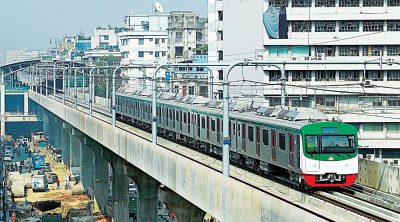Issue 3: ECON MONTHLY BULLETIN
YPF Economics and Jobs Policy Network brings to you the third issue of the monthly Econ Bulletin. This month, our policy associates go deep into the weeds of energy crisis, viability of metro rail and Prime Minister Sheikh Hasina’s visit to India.
BANGLADESH IN DATA
The GDP growth rate was estimated to be 7.5% for the fiscal year 2022-23 beginning in July. In the fiscal year 2020-2021 a growth of 6.94 percent was achieved. But ADB has forecasted a growth rate of around 7.1% for the fiscal year 2023.
- General Index – 7.48%
- Food Index – 8.19%
- Non-Food Index – 6.39%
The inflation rate has decreased a bit from last month’s 7.56%. Still, it is not close enough to the targeted rate of 5.6% for the current fiscal year, which is nearly impossible to achieve now. Bangladesh Bank has already devalued the Taka a number of times in recent months. Inflation will skyrocket if the predicted recession actually affects the global economy.
The prominent gap between the kerb rate and the official rate still remains as the rate set by Bangladesh Bank is still 95 Taka. Shocking everyone, the dollar reached 120 Taka in the Kerb Market the previous month, way higher than the official fixed rate. But various initiatives by the finance ministry and the central bank controlled the rise in US greenback rate.
The wage rate index is intended to measure the movement of nominal wages of low paid skilled and unskilled labour over time in different sectors of the economy. Though the rate is higher than last month, due to inflation, people’s real income has gone down. As the prices of daily commodities rise gradually on a daily basis, the purchasing power of the middle and lower classes is decreasing.
Even though opting for the IMF for a loan created a panic situation among some people because of the IMF’s history, Bangladesh’s situation is not anywhere near that of Sri Lanka’s. Historically, Bangladesh has maintained a healthy debt-gdp ratio over the years, and the amount of foreign debt is much smaller. According to the World Bank, a debt to GDP ratio above the threshold of 77% may have an adverse impact on the economy. But this varies from country to country; a ratio exceeding 100% doesn’t necessarily indicate a bankrupt/insolvent country. So, we have nothing to worry about as of now.
Though this amount is enough to fund 5/6 month’s import bills but there is a catch. IMF doubted the process of how Bangladesh Bank calculating its reserve. Assets which are not liquid should not be included in the calculation. One such asset, Bangladesh’s loan to Sri Lanka, represents a sizeable portion of the country’s reserve, is included in the reserve. So, the actual amount may be much smaller than this.
In fiscal year 2021–2022, the amount of foreign direct investment (FDI) in the nation increased by 39% to $4.7 billion from $3.38 billion; Net FDI inflow surged by 61% in FY22 to $2.17 billion from $1.35 billion.
The most recent figures from the central bank show that the loan flow increased from 13.66% a month earlier to 13.95% in July 2022, year over year. In May of this year, it was 12.94 percent. Even though the Bangladesh Bank chose a contractionary monetary policy for the current fiscal year to contain rising inflation, private sector credit growth in Bangladesh increased further. The demand for more imports to support an economy that is recovering from the coronavirus epidemic and the rising prices of commodities on the world markets drove higher credit expansion in Bangladesh. Additionally, a lot of firms are hesitant to borrow money from the foreign market because of the rise in interest rates that followed the increase in central bank rates in the majority of nations. They are therefore depending increasingly on domestic sources of funding. This is not good news for inflation-hit consumers.
Prepared by: Asif Khan Ullash


